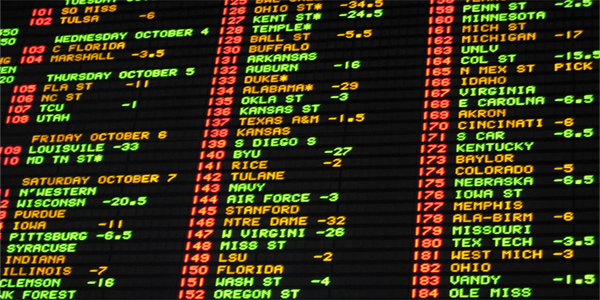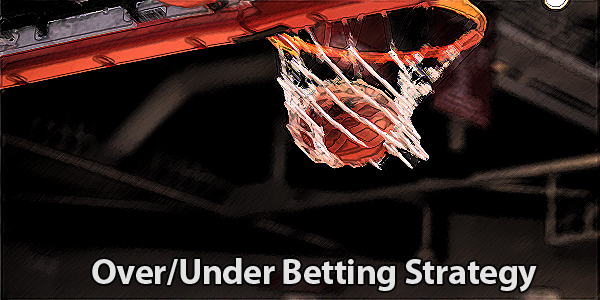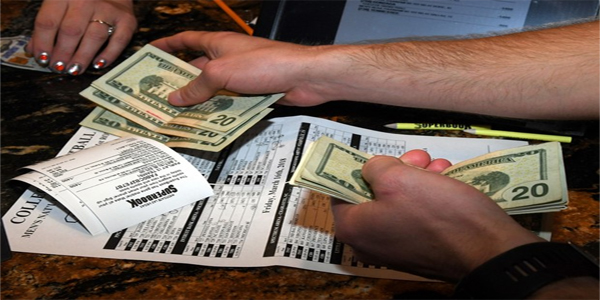There are a lot of misconceptions out there about sports betting. A lot of people that watch sports pick up a sportsbook account and think, “How hard can it be?” Well, it’s not easy. Realistic expectations can go a long way. This is not a get-rick-quick scheme. It is a long-term grind. It is something that requires a lot of discipline and bankroll management.
We’ve all heard the stories about those lottery ticket 12-team parlays that pay out exorbitant amounts of money. The reality is that those are extremely rare. For many handicappers, money like that is not going to come along anytime soon. In terms of win percentages and what it takes to show a profit, that all depends on your average vigorish, also known as “vig” or “juice”. The vig is the number listed after the spread or the specific price on the money line. It is a way for the books to create an edge. If sportsbooks simply paid out even money on everything, they could take a beating if action was really heavy on one side and not the other in a money line sport.
The ultimate goal of the sportsbook on every game is to have a balanced level of action that they are comfortable with on each side. For money line sports, they move around the prices, possibly moving from -125 to -130 on a favorite. For spread sports, they can move the actual game spread or they can adjust the vig.
Most spreads adhere to the standard vig of -110. With a -110 line, bettors will win $1 for every $1.10 that they bet. For example, a $110 bet will return $100. A $100 bet will return about $91. Think of it like the House Edge in blackjack, roulette, craps, or any of the other casino games. It’s a way for the house to limit its own exposure on a game. The concept is the same at -115, where a bettor will win $100 for every $115 wagered.
For money line wagers, the vig is the price that you price. Books use the vig to account for the differences between the two teams. If you could pick the Cleveland Cavaliers against the Brooklyn Nets with no vig, sportsbooks would get decimated by having to pay out on the Cavaliers more often than not. Instead, sportsbooks can set a line, like -400 on the Cavs, where you would win $100 for every $400 that you bet.
The amount that you pay in vig will change the percentage of success that you need to break even. At the standard -110 vig for a regular spread bet, the break-even percentage is 52.38 percent. You would have be on the correct side more than 52.38 percent of the time to make money if you were betting the same amount on every game. If you took an added vig price of -115, you would need a 53.49 percent success rate to break even. The break-even rate changes with every variation to the vig.
In money line sports, some bettors have no problem betting -150 favorites. To break even betting -150 favorites, you need a success rate of 60 percent. In the above example with the Cavaliers and the Nets, assuming a -400 money line price, you would need an 80 percent success rate to break even.
Based on this concept of vig, let’s assume 10 bets, made with the idea of winning a $100 profit:
Team A -3 (-110) WIN
Team B +7 (-115) LOSS
Team C -175 WIN
Team D -215 LOSS
Team E -6 (-110) WIN
Team F +1 (-110) WIN
Team G +110 WIN
Team H -350 LOSS
Team I -115 WIN
Team J +125 WIN
Out of these 10 bets, you have a 7-3 record. If we assume a wager to win $100 on each bet, the total amount bet is $1500. The amount won is $735. The amount lost is $680. You went 7-3 on your bets, but you only made a profit of $55 out of $1500 worth of bets. Why? Because of the vig. You lost a -350 play and a -215 play. That was a combined loss of $565.
Professional handicappers shoot for numbers in the 55 to 56 percent range over the long-term on spread wagers. Anything better than that is a very good living. Anything in the 53 to 54 percent range is very decent. Anything below is barely breaking even or worse. It’s still called gambling. There’s a lot of variance in sports outcomes.
The formula for determining your break-even percentage for a negative money line is:
Vig / (Vig-100)
-110 / (-110-100)
-110/-210 (dividing (or multiplying) two negatives makes a positive)
52.38%
The formula for determining your break-even percentage for a positive money line is:
100 / (Vig+100)
100 / (110+100)
+100 / +210
47.62%
These are important mathematical concepts that can help your bottom line, so be sure to keep them in mind with every bet you make.






